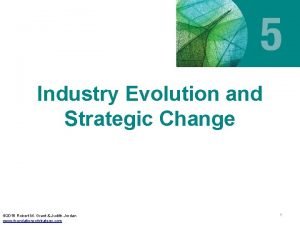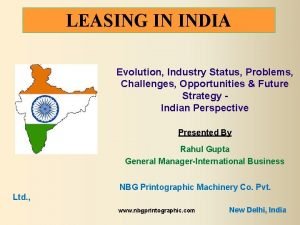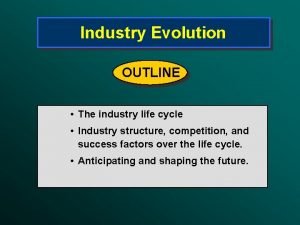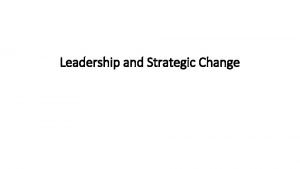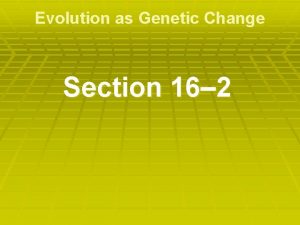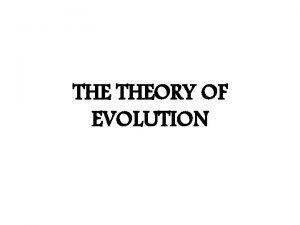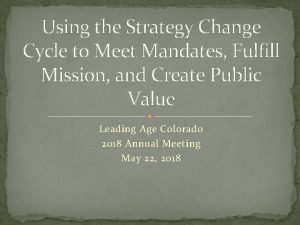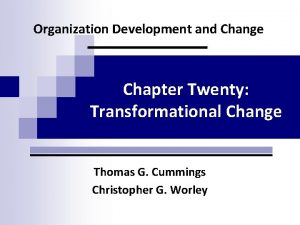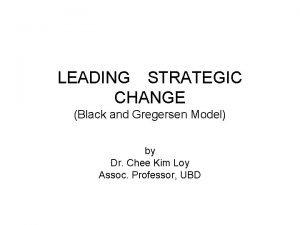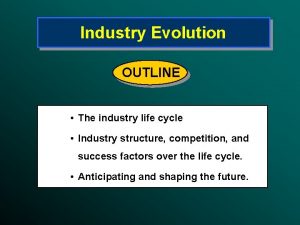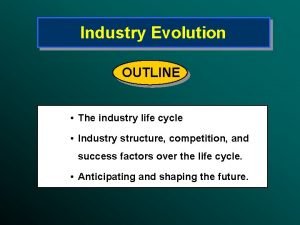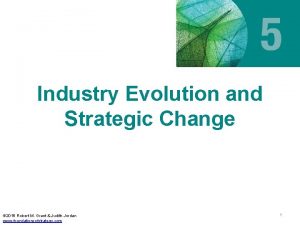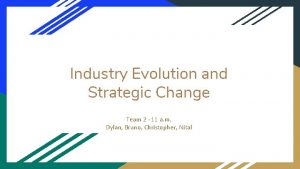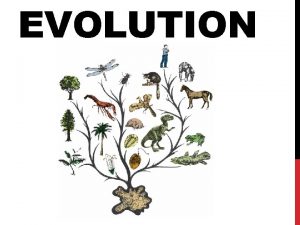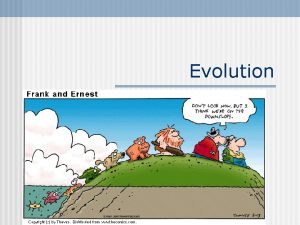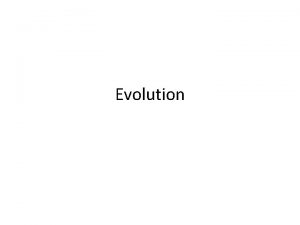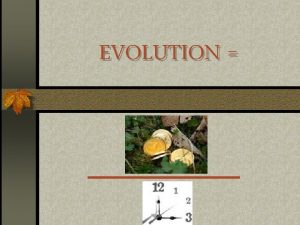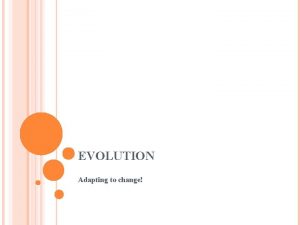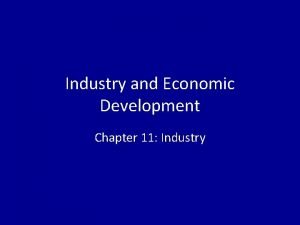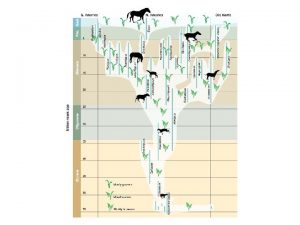Chapter 8 Industry Evolution and Strategic Change Prof






















- Slides: 22

Chapter 8 Industry Evolution and Strategic Change Prof. Luciano Thomé e Castro

© 2013 Robert M. Grant www. contemporarystrategyanalysis. com 2

Industry Evolution and Strategic Change OUTLINE • Industry evolution and the industry life cycle • The challenge of organizational adaptation and strategic change • Managing strategic change • Developing new capabilities © 2013 Robert M. Grant www. contemporarystrategyanalysis. com 3

The Industry Life Cycle Drivers of industry evolution: • Demand growth • Creation and diffusion of knowledge © 2013 Robert M. Grant www. contemporarystrategyanalysis. com 4

Product and Process Innovation Over Time © 2013 Robert M. Grant www. contemporarystrategyanalysis. com 5

How Typical is the Life Cycle Pattern? • Technology-intensive industries (e. g. pharmaceuticals, semiconductors, computers) may retain features of emerging industries • Other industries (especially those providing basic necessities, e. g. food processing, construction, apparel) reach maturity, but not decline • Industries may experience life cycle regeneration, e. g. motorcycles, TVs: Sales B&W MOTORCYCLES 1900 1950 1980 20121930 Color Flat screen Portable HDTV TELEVISIONS 1950 1970 1990 2010 • Life cycle model can help us to anticipate industry evolution—but dangerous to assume any common, pre-determined pattern of industry development © 2013 Robert M. Grant www. contemporarystrategyanalysis. com 6

Innovation & Renewal Over the Industry Life Cycle: Retailing © 2013 Robert M. Grant www. contemporarystrategyanalysis. com 7

Evolution of Industry Structure over the Life Cycle Introduction Growth Maturity Demand Early adopters Rapid increase in market penetration Replacement/ Obsolescence repeat buying; price sensitive customers Technology Competing technologies; rapid product innovation Standardization; rapid Diffused know how; Little innovation process innovation incremental knowledge Products Wide variety of features and designs Design & quality improve; dominant design emerges Commoditization; brand differentiation Differentiation difficult Manufacturing Short-runs, skill intensive Capacity shortage; mass production Over-capacity emerges, deskilling Overcapacity Trade Decline Production shifts from advanced to emerging companies Competition Few companies Entry, mergers exist Shakeout and consolidation Price wars and exit KSFs Product innovation Design for manufacture; process innovation Cost efficiency (scale economics low cost inputs) Low overheads; rationalization 8

The Driving Forces of Industry Evolution BASIC CONDITIONS Customers become more knowledgeable & experienced Diffusion of technology Demand growth slows as market saturation approaches © 2013 Robert M. Grant www. contemporarystrategyanalysis. com 9 INDUSTRY STRUCTURE COMPETITION Customers become more price conscious Products become more standardized Production becomes less R&D and skillintensive Production shifts to low-wage countries Quest for new sources of differentiation Price competition intensifies Excess capacity reached Distribution channels consolidate Bargaining power of distributors increases

Changes in the Population of Firms Over the Industry Life Cycle: US Auto Industry 1895 -1960 Source: S. Klepper, Industrial & Corporate Change, August 2002, p. 654. 10 © 2013 Robert M. Grant www. contemporarystrategyanalysis. com

The World’s Biggest Companies by Market Capitalization, 1912 and 2009 1912 2012 $bn US Steel 0. 74 Apple 429 Standard Oil NJ (Exxon) 0. 39 Exxon. Mobil 407 J&P Coates 0. 29 Microsoft 254 Pullman 0. 20 IBM 228 Royal Dutch Shell 0. 19 Wal-Mart Stores 212 Anaconda 0. 18 Chevron Texaco 210 General Electric 0. 17 China. Mobile 204 Singer 0. 17 General Electric 201 American Brands 0. 17 China Construction Bank 198 Navistar 0. 16 Google 194 British American Tobacco 0. 16 Nestlé 191 De Beers 0. 16 Johnson & Jonson 179 © 2013 Robert M. Grant www. contemporarystrategyanalysis. com 11

Strategy & Performance Across the Industry Life Cycle © 2013 Robert M. Grant www. contemporarystrategyanalysis. com 12

Organization Adaptation and Change: The Sources of Inertia 1. Organizational Routines – Existing patterns of coordinated activity make it difficult to develop new capabilities 2. Social & Political Structures – Change threatens existing social relationships and power structures 3. Conformity – Imitation locks firms into common structures and strategies (“institutional isomorphism”) 4. Limited Search – “boundary rationality”, preference of exploitation over exploration, and satisfying behavior limit firms to incremental change 5. Complementarities between strategy, structure, and systems – Firms create unique configurations of organizational features; localized changes tend to be dysfunctional; change needs to be systematic © 2013 Robert M. Grant www. contemporarystrategyanalysis. com 13

Tools of Strategic Change Management • • • Creating perception of crisis – A crisis facilitates organizational change. If there’s no crisis—create the perception of one Establishing Stretch Targets – Demanding performance targets can generate ambition and mobilize effort Creating Individual Initiatives – Initiatives launched by the CEO can be useful vehicles for change e. g. Jack Welch at GE Reorganization and New Blood – Changing the organizational structure breaks down existing power bases and creates openings for external hires Dynamic Capabilities - Are the “ability to integrate, build, and reconfigure internal and external competences to address rapidly changing environments” (David Teece) Multiple Scenario Analysis – Offers a structured approach for managers to address the forces s that are changing their business environment and to prepare for the future © 2013 Robert M. Grant www. contemporarystrategyanalysis. com 14

Managing Strategic Change: Dual Strategies and Organizational Ambidexterity • • Derek Abell’s Dual Strategies Firms need: a) A strategy for today that focuses on exploiting existing resources and capabilities and current market positions b) A strategy for tomorrow based upon adaptation to future challenges Michael Tushman & Charles O’Reilly’s Ambidextrous Organization Firms need to: a) Exploit existing resources and capabilities and market positions b) Explore new opportunities for the future o Structural Ambidexterity – Exploration and exploitation allocated to different organizational units o Contextual Ambidexterity – Same organizational units and people perform both exploration and exploitation 15 © 2013 Robert M. Grant www. contemporarystrategyanalysis. com

Gary Hamel: Shaking the Foundations © 2013 Robert M. Grant www. contemporarystrategyanalysis. com 16

The Challenge of Developing New Capabilities: Distinctive Capabilities as a Consequence of Childhood Experiences: The Oil Majors 17 © 2013 Robert M. Grant www. contemporarystrategyanalysis. com

Integrated resources to create organizational capability ORGANIZATIONAL CAPABILITIES Processes Motivation Organizational Alignment TANGIBLE INTANGIBLE HUMAN • Financial • Physical • Technology • Reputation • Culture • Skills/know-how • capacity for communication & collaboration • Motivation © 2013 Robert M. Grant www. contemporarystrategyanalysis. com 18 Organizational Structure

Hyundai Motors: Developing Capabilities Through Product Development © 2013 Robert M. Grant www. contemporarystrategyanalysis. com 19

Knowledge Management & the Knowledge. Based View: Types of Knowledge Type of Knowledge Implications Explicit: Knowing about Easy and cheap to Easy to exploit within transfer. A “public the firm – but good” (non-exclusive) difficult to protect from rivals: hence, a weak basis for substantial advantage Tacit: Knowing how Difficult to articulate or codify. Transfer is slow and costly. Requires observation and practice © 2013 Robert M. Grant www. contemporarystrategyanalysis. com 20 Characteristics Sound basis for sustainable competitive advantage; Challenge is to replicate it internally

Knowledge Management Practices © 2013 Robert M. Grant www. contemporarystrategyanalysis. com 21

Knowledge Conversion © 2013 Robert M. Grant www. contemporarystrategyanalysis. com 22
 Industry evolution and strategic change
Industry evolution and strategic change Problems of leasing in india
Problems of leasing in india Industry life cycle model
Industry life cycle model Tirole
Tirole Io model strategic management
Io model strategic management Tows matrix
Tows matrix Strategic industry analysis
Strategic industry analysis Balogun and hailey four types of strategic change
Balogun and hailey four types of strategic change Strategic fit vs strategic intent
Strategic fit vs strategic intent Section 16–2 evolution as genetic change
Section 16–2 evolution as genetic change Slow evolution
Slow evolution Chemical change definition
Chemical change definition Absolute change and relative change formula
Absolute change and relative change formula Difference between chemical and physical change
Difference between chemical and physical change Change in supply and change in quantity supplied
Change in supply and change in quantity supplied Chemical change and physical change
Chemical change and physical change Rocks change due to temperature and pressure change
Rocks change due to temperature and pressure change Whats a chemical change
Whats a chemical change First order change examples
First order change examples Strategy change cycle
Strategy change cycle Technostructural interventions
Technostructural interventions Characteristics of transformational change
Characteristics of transformational change Strategic change matrix
Strategic change matrix
